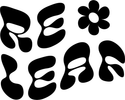BUY LESS, BUY BETTER

This concept is already well known in the fashion world. This is called "slow fashion". The principle is to stop overconsumption and therefore "fast fashion". Buy less but better! This principle also exists in the world of decoration and design. It's called "slow design". Here, the concept applies mainly to a return to the roots: the craft.
Where does the term come from?
It was Alastair Fuad-Luke, an English university student, who theorized this movement in 2004 by proposing to designers to design slow design objects in the face of the invasion of standardized decorative objects, governed by the laws of production. Slow design is therefore about taking the time to design something of quality by including human values and sustainable development in your approach.
The values of "slow design"
- Valorization of artisanal creations and traditional techniques
- Unique or limited edition objects/furniture creations (unlike large industrial brands)
- Simple structures and elaborations
- Use of recycled materials and overcycling (use of materials or objects no longer in use, with the aim of transforming them into quality objects/furniture)
- Manufacturing with materials that promote sustainable development.
The makers of Re-leaf
The makers we work with do not strictly speaking belong to the "slow design" movement but are very close to it. The vast majority of our creators work in a traditional way. Their objects are handmade, in small quantities and with materials that respect our dear planet.
Buy less, buy better
By buying from makers, you are buying more than just an item. You buy a piece of a heart, a part of someone's life, a story to pass on.
It's like when you travel to the other side of the world and want to buy local items, you go to craftsmen and not to Ikea (or equivalent). It should be the same at home. Decoration must be full of history. It has to be collected over the years. It must be passed on to future generations.


